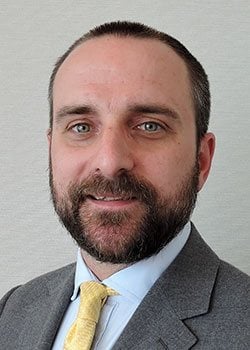
Arcadis may not compete (yet!) with Apple in the brand recognition stakes, but in the world of environmental engineering its right up there with the iPhone as the premier player in its space. For over 130 years, from its roots in the Netherlands, where it was an early pioneer in redevelopment of land, water and sea defence systems, the company has grown to become a leading global player in built asset and sustainability solutions, with a workforce of nearly 30,000 people spread over 72 countries.
In the Asia Pacific region, our consultants and engineers are regularly called upon to work on the types of projects that can make or break a country’s future, from protecting against coastal erosion to designing flooding protection systems to advising governments and stakeholders on master plans for smart city developments.
But, as with most global companies that have grown inorganically, there can be regional differences, and one has to be respectful of different ways of doing things. When I moved from my private practice in project finance to build an in-house legal team, I was very conscious that I might be seen as an outsider, someone who should be kept at arm’s length. Crucially, I needed to earn the trust of my new business management very quickly, and the easiest way to do that is to present yourself as someone who’s coming in to try to take their problems away. Going for the low-hanging fruit got me quick wins and showed I was someone who would make their lives easier.
To complicate matters, the Asian side of the business had little in the way of localised legal resource and so my first job was working out what talent we had within the organisation that I could leverage. There were nearly 4,000 people based across the Asian offices, and it seemed obvious that a fairly large number of them could be legal graduates who could find their way around a contract, even if they were not in my legal team.

As a substitute for drafting new personnel into the team, I managed to borrow time from others around the business to help me build a new commercial contract review system – exactly the sort of quick win I was looking for. In the longer term, it was clear that technology was going to have to do a lot of the heavy lifting in the legal function.
As you can imagine, as a built asset consultancy we didn’t have much in the way of pure play legal tech, but like most organisations we have software licences for legally useful technologies. Even a ubiquitous office technology like the Microsoft O365 suite of products contains a large volume of very helpful stuff that can help GCs drive meaningful improvements and build momentum quickly. It may not be at the cutting edge, but it’s an incredibly effective way to build trust. Data visualisation platforms like Power BI can be linked into Excel and the other products in the Microsoft suite to produce clear dashboards. Even something as simple as that can add a lot of clarity and transparency and around what the function is doing to leadership. For example, we now generate automated utilisation reports that show the different client types we have served, the value of the contracts that we’re reviewing and the type of work we’re doing on those contracts. That means I am not only able to keep track of what the team is working on, but can show the business our return on investment or the savings we are making in terms of claims avoided. When you add those numbers together legal no longer looks like a cost.
GCs can fixate on having new systems without first understanding the tools they already have at their disposal. Knowing what you’ve already got is super important for any business leader, and that applies to both our talent management and technology. Ultimately, if you are going to ask the business for money to buy some legal tech it is your responsibility to check whether the same result can be obtained with a bit of research into the products you already own. This also demonstrates that you can use technology effectively to capture value.
When it comes to building trust, nothing is more important for a legal team than showing business colleagues it has their backs. Using technology to develop new and more robust ways of managing corporate governance is one of the best ways to do this. We have automated the approvals and governance processes for new work entirely by putting it all on a digitally-enabled system we coded ourselves in-house. Likewise, all of our governance and reporting records are now maintained through a digital platform that eliminates duplication of records and work streams, or the need to fill in multiple forms to do the same thing. Rather than using a number of operating systems globally that don’t talk to each other, we now have a much more joined up system.
It also helps generate real value to the business. For example, a project sold say in 2016 on the basis of a certain financial performance or risk profile may no longer be adhering to those assumptions five years later. If there’s a delta between the financial and risk performance then and now we can track that digitally through an automated project review process and take action. The upshot is that we’re not just reporting dry data. We’re looking at trends, we’re looking at root cause analysis through the types of claims that come into our business. That data is helping you learn lessons rather than perpetuate risks. That builds trust and confidence within the business and helps make them realise you are a reliable partner.
Everything in its right place
In its simplest form, Arcadis advises clients on their built assets, covering everything from services to manage their space to master planning and business case design. It also operates an architectural business, a landscaping business, a project and programme management business, a ‘pure play’ design engineering business, and a general business advisory and consulting practice that offers analysis, feasibility, delivery and implementation services to a range of built assets. With such a broad portfolio, developing and implementing a digitalisation strategy becomes hugely important.
The enlightened contractors we work with are shifting quickly into the use of technologies. We’re conscious of the pressure that places on us to evolve. We don’t just want to keep up with them, we want to be ahead of the game, selling digitally-enabled consultancy services that allow our clients to do more and better things with the information and analytics we can provide. Whether that involves using drone technology and advanced camera technology to provide remote access for site-owners or decision-makers sitting thousands of miles away, or offering our insight on asset performance through our Arcadis GEN brand, or through platform-led, subscription-based models where our clients can customise the expertise and experience they get from us, technology is going to be at the heart of our future and we have invested in the in-house capabilities and product development skills to deliver.
In short, repetitive tasks are being replaced by focused automated processes and platform solutions across the business, and the legal function should be no different. To maintain relevance in our digital future, we have to stay close to the business and keep our eyes open. But we need to have the bandwidth to keep our eyes open.
For example, it is just not efficient to have a senior in-house lawyer doing mundane contract work. I want my senior lawyers helping the business win big mandates, avoid big claims, navigate new legislative headwinds or develop digitally-enabled, client-facing services. Having them spend time on basic contract reviews is a problem, the solution to which can be using technology to do the same job, or it can be drawing on back-office support centres in markets that have a lower operating cost.
The real danger is using tech for tech’s sake. Digital tools are a big part of driving efficiency, but I’m a believer in a razor sharp focus on legal operations, you also need to look at the general optimisation of your cost and operating model via standardisation, automation and cost efficiency. If you can use technology to get where you need to be then that’s great, but it is a mistake to focus too narrowly on that. Your goal as GC is not having technology, it is ensuring the business gets quality, accessible advice that delivers value for money.